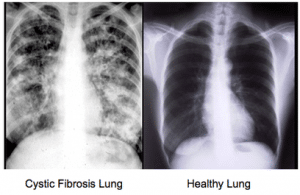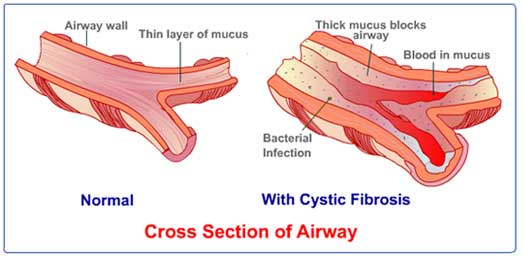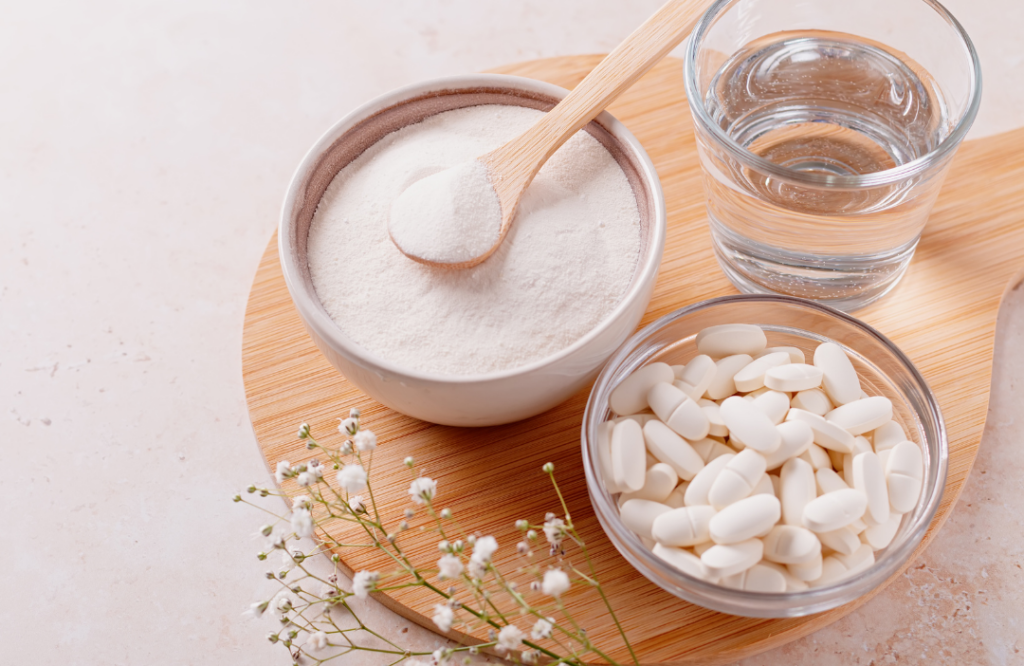Cystic Fibrosis and Acupuncture
Published on February 19, 2015 by Dr. Caitlin Gordon
 Cystic Fibrosis is an inherited chronic disease. It causes severe damage to the lungs and digestive system and sufferers have a greatly reduced quality of life. The disease is due to a mutation that affects the cells that produce mucus, sweat, and digestive secretions. Instead of being thin and slippery, these secretions become sticky and fail to fulfill their normal lubricating function. This causes a host of problems including:
Cystic Fibrosis is an inherited chronic disease. It causes severe damage to the lungs and digestive system and sufferers have a greatly reduced quality of life. The disease is due to a mutation that affects the cells that produce mucus, sweat, and digestive secretions. Instead of being thin and slippery, these secretions become sticky and fail to fulfill their normal lubricating function. This causes a host of problems including:
- difficulty breathing, wheezing, a persistent cough that produces thick mucus
- repeated lung and sinus infections
- severe constipation
- poor weight gain and growth.
- Symptoms begin in infancy and may become more or less severe over time.
Cystic Fibrosis is the result of a mutation in a gene that changes a protein in charge of regulating the movement of salt in and out of cells. It is a recessive gene, which must be inherited from both parents in order for the condition to manifest. It cannot be prevented. The disease is most common in Caucasians and affects men and women equally. It is now common practice for hospitals to screen every newborn for cystic fibrosis. The disease requires daily care, but fortunately, due to advancements in screenings and treatments, most people live into their 20s and 30s and some into their 50s.
 Treatment begins as soon as the disease is detected. The screening process takes a blood sample and looks for immunoreactive trypsinogen, or IRT, a chemical released by the pancreas. A positive test for IRT must be confirmed by another test as a premature or stressful birth can also result in a positive IRT test. A sweat test or a DNA sample will confirm the diagnosis of cystic fibrosis. Due to the disruption of salt regulation in cells, people with cystic fibrosis will have sweat that is much saltier than people without the condition.
Treatment begins as soon as the disease is detected. The screening process takes a blood sample and looks for immunoreactive trypsinogen, or IRT, a chemical released by the pancreas. A positive test for IRT must be confirmed by another test as a premature or stressful birth can also result in a positive IRT test. A sweat test or a DNA sample will confirm the diagnosis of cystic fibrosis. Due to the disruption of salt regulation in cells, people with cystic fibrosis will have sweat that is much saltier than people without the condition.
There is no cure for cystic fibrosis, but western medicine can control symptoms to improve the quality of life and allow patients to attend school or work. Treatment attempts to prevent and control lung and sinus infections, loosen and remove mucus from the lungs, and prevent and treat intestinal blockages. Western pharmaceuticals like antibiotics, steroids, mucus-thinning drugs, and oral pancreatic enzymes help mitigate symptoms. Chest physical therapy is aimed at breaking up mucus collected in the lungs and is beneficial. Surgery is sometimes indicated. Surgical options include removal of nasal polyps, lung transplants, oxygen therapy and bowel surgery. Early aggressive intervention has the best chance of improving symptoms.
Traditional Chinese Medicine and Cystic Fibrosis
Traditional Chinese Medicine views cystic fibrosis as one of three main patterns depending on the current stage of the disease. The disease is not progressive so it will fluctuate between stages of minimal symptoms and severe flare-ups.
- TCM typically considers a genetic defect to be an indication of “kidney essence deficiency”. Constitutionally weak kidneys can be treated with acupuncture, nutrition, and herbal medicine, but treating the patterns related to current symptoms is most beneficial.
- Depending on symptoms, the common patterns alternate between phlegm heat, phlegm cold and toxic fire. This corresponds to the western medical findings of mucous membrane dysfunction. The body is unable to clear itself from sticky phlegm and all symptoms stem from this internal condition.
- Acupuncture, nutrition, and herbal treatments focused on dissolving phlegm and clearing heat or cold are most effective. This generally means strengthening lung and spleen function. Strengthening these two organ systems has the added benefit of tonifying the Wei qi (the defensive qi which protects you from pathogenic invasion), increasing the amount of time between acute infections and reducing their length and severity.
- Myofascial Decompression, a.k.a Cupping is a very effective tool for breaking up phlegm and helping to improve breathing.
- Exercise, high fluid intake, and probiotics along with a healthy nutrient-dense diet helps thin and clear mucus and support the digestion for adequate nutrition.
Sources:
Cystic fibrosis | University of Maryland Medical Center. Retrieved September 13, 2013 at: https://umm.edu/health/medical/altmed/condition/cystic-fibrosis#ixzz2etTF1dME
Mayo Clinic. “Cystic Fibrosis”. June 13, 2012. Retrieved September 14, 2013 at: https://www.mayoclinic.com/health/cystic-fibrosis/DS00287/TAB=resources
The contents of this site, including text, graphics, images, and other material are for informational purposes only. Nothing contained in this site is or should be considered or used as a substitute for professional medical or mental health advice, diagnosis, or treatment. Please schedule an appointment for personalized health advice.






